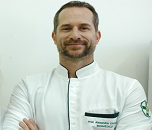Scientific Program
Keynote Session:
Oral Session 1:
- International Conference on Pharmacology and Drug Discovery
Title: EVALUATION OF ANTI-ANXIETY AND ANTI-DEPRESSANT EFFECT OF PALONOSETRON IN SWISS ALBINO MICE
Biography:
Dr. Jyoti Sharma, currently working as Assistant Professor in the Department of Pharmacology, PGIMS, Rohtak. Actively involved in teaching of MD, MBBS, BDS & Allied Health Sciences. Work profile also includes Detection & reporting of ADRs, Quality assurance (e.g. completeness and integrity of data) of uploaded ADRs, Assessment of Individual Case Safety Reports, Causality assessment, Clinical and experimental Research. Has a total of 7 years of teaching experience. Recipient of Dr. R. D Kulkarni Award for Third position in Poster presentation at South Asian College of Clinical Pharmacology an Affiliate of American College of Clinical Pharmacology in Eleventh Annual Conference “Clinical Pharmacology: Contributing to Global Health and Policies” held from 29th April – 2nd May 2018. The above study was done to find out the anxiolytic and antidepressant effect of Palonosetron as no studies have been found till date.
Abstract:
Title: NEEDLE-FREE INJECTIONS IN A CONNECTED WORLD
Biography:
Dr. Patrick Anquetil is Portal Instrument’s Chief Executive Officer. He brings more than 20 years of experience building world-class teams and leading high-tech / tough-tech bioengineering companies from the lab to the marketplace. Prior to founding Portal, he was co-founder of SynapDx, an autism diagnostic company based on RNA expression analysis, and Aretais, a venture in the field of blood glucose monitoring leveraging advances in Coherent Anti-stokes Raman Spectroscopy. Dr. Anquetil began his career as a science and nanotechnology equity research analyst at Susquehanna International Group authoring and marketing equity research reports to hedge funds and portfolio managers. Dr. Anquetil holds a doctorate in bio-instrumentation from MIT, an MBA from Harvard Business School, and a master's degree from the ETH in Zurich and the University of Tokyo. His scientific work has appeared in peer-reviewed publications as well as mainstream media, including MIT Technology Review, Wired Magazine, PBS, and CNBC.
Abstract:
Adherence to treatment in injectable therapies for chronic disease is very low (45% - 60%) and in part due to the inconvenience and anxiety of using needles. There is an opportunity for a new form of drug delivery system that is needle-free to change this situation and transform the perception and approachability of therapies based on injectable biologics. Portal Instruments has developed a computer-controlled needle-free system transforming this paradigm and empowering patients to self-inject their medicines with an easy to use and approachable device. This innovative drug delivery system replaces needle & syringes and auto-injectors and clinical studies have demonstrated that it is well tolerated. Issued from MIT Research and easily connected to the cloud, the Portal device allows biopharmaceutical companies to augment their biological injectable therapies and offer a modern administration method for patients. The device captures injection data in real time and keeps all stakeholders involved for optimal care. Clinical and market studies have shown that patients prefer the Portal Needle-free injector device vs. traditional needle and syringe injections and would be willing to switch therapies if drugs were available with this device.
Title: Evaluation of Dexamethasone Effects in COVID-19 Treatment
Biography:
Abstract:
(COVID-19) Corona virus disease 2019 is related to severe lung damage and it is likely to cause multi-organ failure, finding a definitive treatment challenging researchers worldwide. Recently dexamethasone has demonstrated significant effects in COVID-19; it reduced mortality and improved recovery. It suppresses immune response and inhibits inflammatory factors, and hence it reduces inflammation and prevents progression to severe form of COVID-19 that caused by excessive cytokine release. Indeed, current evidence about dexamethasone role in the management of COVID-19 is insufficient. The pathophysiology of COVID-19 and dexamethasone action are key points behind its contribution in the treatment of this panepidemic.
Title: Why Homeopathy in Prevention and Treatment of SARS-Cov-2 Infection?
Biography:
Huang Wei Ling, born in Taiwan, raised and graduated in medicine in Brazil, specialist in infectious and parasitic diseases, a General Practitioner and Parenteral and Enteral Medical Nutrition Therapist. Once in charge of the Hospital Infection Control Service of the City of Franca’s General Hospital, she was responsible for the control of all prescribed antimicrobial medication and received an award for the best paper presented at the Brazilian Hospital Infection Control Congress in 1998. Since 1997, she works with the approach and treatment of all chronic diseases in a holistic way, with treatment guided through the teachings of Traditional Chinese Medicine and Hippocrates. Researcher in the University of São Paulo, in the Ophthalmology department from 2012 to 2013.Author of the theory Constitutional Homeopathy of the Five Elements Based on Traditional Chinese Medicine. Author of more than 60 publications about treatment of variety of diseases rebalancing the internal energy using Hippocrates thoughts
Abstract:
Introduction: SARS-CoV-2 is a virus that emerged in Wuhan China (December-2019). On February 2021, there was 113 millions cases confirmed cases and 2.5 millions deaths worldwide. In TCM, COVID 19 infection is classified as external pathogenic factor invasion. According to a previous study of the author, more than 97% of the 409 patients analyzed have chakras’ energies deficiencies. Purpose: The purpose of this study is to demonstrate That the use of homeopathy medications to replenish the chakras’ energies centers are important to maintain the functioning of the internal massive organs, responsible for the production of Yin, Yang, Qi and Blood. Demonstrate how the lack of this energy in the majority of the patients studied could be leading to the complications associated with SARS-CoV-2 infection. Methods: A clinical case report of a 42-year-old male patient, layer and work on the military. He was diagnosed with chakras energy deficiencies in November of 2019, and was performing treatment for replenishment of the chakras energy with homeopthy medications. In May 2020, the patient returned, reported to have symptoms of redness on the face and neck, when he went to bathroom to check on the redness, he faintened for the period of five minutes. He was taken to the emergency, exams were performed and nothing was found. He also reported shortness of breath. The patient had no cought and no fever. He received treatment based on the reasoning of Traditional Chinese Medicine, through the Five Elements theory. The shortness of breath was associated with deficiency of the Kidney or the second chakra. The previous measurement had shown deficiency in 7 of the 7 chakras. The patient was oriented to increase the water intake to improve the energy of the Kidney, and treatment was started with homeopathy medications, to replenish the energy of the chakras, according to the theory entitled Constitutional Homeopathy of the Five Elements based on Traditional Chinese Medicine, on concentration of 1000CH, as he had taken 30CH and 200CH of the homeopathy (Natrum Muriaticum, Phosphoros, Sulphur, Calcarea Carbonica, Silicia). Medication for taking out Heat retention were also recommended (Mercurio solubilis 200CH and Aconitum 6CH) as well as Chinese dietary counseling. After, it was found that the patient had been in contact with three other people who have coronavirus infection and died from the complications. Results: The patient presented great improvement of all symptoms, on the following day of the start of the medication, not needing hospitalization. Conclusion: When treating patients with chakras’ energies deficiencies, it is important to be careful with the recommendation of high-concentrated medications, because according to the Arndt-Schultz law, high-concentrated medicaiton will harm the vital energy even further, leading to increase the internal Heat, that is comprehended as the inflammatory process in Western Medicine and increasing the risk of having intravascular coagulation, myocardial infarction, renal insuficiency and respiratory insuficiency due to the lack of energy of the chakras tha tis responsible for the proper functioning of these organs. The use of homopathic medications in these patients are very important to replenish the functions in all the chakras’ energies centers that are responsible for the production of Yin, Yang, Qi and Blood of the patients, and replenish the second chakra, that is reponsible for the Zheng-Qi, that is the force respomsible for the protection of the body against the invasion of exetrnal pathogenic factor, in this case, SARS-CoV-2 infection.
Title: Glass ionomer cement modified by a imidazolium salt: adding antifungal properties to a biomaterial
Biography:
Alexandre Ehrhardt is an Adjunct Professor with a demonstrated history of working in Clinical Laboratory. Skilled in Toxicology and Pharmacology, Immunology and Hematology. Hold a strong professional education with a Master Degree in Pharmacology and Therapeutics focused in Development of Bioactives Compounds from Universidade Federal do Rio Grande do Sul (Brasil). Currently is developing a project focusing on Biomaterials with antibacterial and antifungal activity.
Abstract:
A plethora of bacteria and fungi are able to alternate planktonic growth and community growth, commonly referred as biofilms. Orthodontic appliances favors the colonization by Candida albicans yeasts (C. tropicalis, C. parapsilosis and C. krusei) in the saliva of individuals with or without clinical manifestations of candidiasis. The concern of biofilm formation during orthodontic treatment, associated with dental plaque formation and periodontal diseases is of concern considering that Candida spp. biofilms have a great resistance to antifungal drugs according to several studies. In order to minimize this problem, it is proposed to add antifungal properties to a biomaterial by modifying a glass ionomer cement with the addition of an imidazolium salt: C16MImCl. The process consisted of an structural modification of a commercially available glass ionomer cement by inserting the imidazolium salt 1-n-hexadecyl-3-methylimidazolium chloride (C16MImCl), generating a new biomaterial with antifungal biofilm activity. Test specimens were prepared using a commercial glass ionomer cement to which 10 ppm of cetylpyridinium chloride (CPC) as a reference ionic antifungal agent and C16MImCl were added. The feasibility and hypoallergenicity of the new biomaterial were assessed by microhardness plastic deformation and chorioallantoic membrane assays. Colony counting and SEM images evaluated the modified specimens’ antibiofilm activity against three multidrug-resistant Candida species. The modified glass ionomer cement presented a strong antibiofilm activity against Candida spp., without losing its original micromechanical and hypoallergenic properties. A good biofilm penetration was observed, breaking the fungal protection and characterizing an antifungal effect even at very low concentrations.
Title: A DNA Nanodevice Simultaneously Activating the EGFR and Integrin for Enhancing Cytoskeletal Activity and Cancer Cell Treatment
Biography:
Dr. Baig, MMFA is a registered pharmacist, and currently a post-doctoral fellow (PDF) at the Faculty of Dentistry, The University of Hong Kong, under the supervision of Professor Dr. Chengfei Zhang. He received his Doctor of Pharmacy (PharmD), and MPhil (Pharmaceutical Chemistry) degrees from the Faculty of Pharmacy, Bahauddin Zakariya University (BZU), Pakistan, and a Ph.D. degree from the School of Chemistry and Chemical Engineering, Nanjing University (NJU), China under the supervision of Prof. Dr. Xing-Hua Xia. During his PharmD research, he worked on a clinical trial in the Cardiology Ward of Nishtar Hospital, Multan, Pakistan (2009-2011). Later, he worked as a “Research Assistant” on a breast cancer project in the Department of Molecular Biology & Biotechnology, BZU, Pakistan (2011-2012). His task was to analyze genetic polymorphism in the DNA extracted from the WBCs of the freshly collected blood samples. Then, he joined “Novartis Pharma, Pakistan” as a “Medical Information Officer” in the cardiovascular group (2012-2015) and won the “National Performance Award” in 2015. After that, he switched to academia in 2015 and worked as a “Lecturer of Pharmacology and Biochemistry” in Multan Medical & Dental College, University of Health Sciences, Lahore, Pakistan. He also taught Pharmacology and Physiology as a visiting lecturer at China Pharmaceutical University, and Nanjing Medical University in summer 2019. His MPhil research was focused on DNA Nanotechnology, Polymers, Material Chemistry, Drug Delivery, Biomedical Engineering, and Molecular Pharmaceutics. During his PhD, he won an excellent PhD student award in 2019 and worked on MechanoPharmacology, Advanced DNA NanoTherapeutics, Developmental Biology, Neuroscience, Biophysics, Bio-sensing, Bio-imaging, and Diagnostics. Currently, his research focus is designing DNA-based novel functional & bio-active nanomaterials to apply in Restorative Dentistry, Oral Microbiology & Oncology, Regenerative Therapeutics, and Stem Cells Research. He has published 50 peer-reviewed articles, and 3 book chapters including 19 publications as a first author in prestigious biomedical and nanotechnology journals such as Nano Letters (ACS, USA), indexed in Harvard University Library Press, USA. He has an H-index of 12, and a total of 425 citations (google scholar) with a cumulative impact factor of 173.
Abstract:
Cell-surface receptors (e.g., EGFR and integ-rin) and their interactions play determining roles in signal transduction and cytoskeletal activation, which affect cell attachment/detachment, invasion, motility, metastasis (intra-cellular), and cell−cell signaling. For instance, the interactions between the EGFR and integrin (α6β4) may cause increased mechanical force and shear stress via enhanced cytoskeleton activation. Here, we design a DNA nanodevice (DNA-ND) that can simultaneously target the EGFR and integrin receptors on the caveolae. The piconewton (pN) forces in response to the EGFR−integrin coactivation can be sensed upon the unfolding of the DNA hairpin structure on the side arm of the device via changes of the fluorescence and plasmonic signals. We find that simultaneous activation of EGFR−integrin receptors causes enhanced signal transduction, contractions of the cells, and initiation of the biochemical pathways, thus resulting in a change of the cell division and endocytosis/exocytosis processes that affect the cell proliferation/apoptosis. The DNA-ND further enables us to visualize the cointernalization and degradation of the receptors by lysosomes, providing a novel approach toward bioimaging and mechano-pharmacology.
Title: Biomarkers as Key Drivers of Drug Development in Gene Therapy
Biography:
Executive veteran of the biopharmaceutical industry with extensive global leadership experience in translational science, clinical development and global medical affairs.C-suite executive and industry leader providing in-depth expertise for pre-clinical and clinical study strategy, planning, execution and monitoring, regulatory interactions, investor relations, fundraising, M&A and IPO process and deliverables. Chief Medical Officer for ASC Therapeutics, former CMO for Symvivo, Myriad Genetics and CellMax Life, Vice President for Becton Dickinson and Global Medical Head for Abbott/AbbVie (Humira).
Abstract:
Biomarkers are tools that can facilitate selection and monitoring of gene therapies, and their proper identification and application allows patients to be treated accurately, effectively, and safely. Several biomarkers of disease, immune, cellular, and molecular responses to gene therapies are available, and the role of biomarkers will expand as gene therapies continue to develop. Selecting the right patient for the right therapy and monitoring that patient’s response to the therapy is imperative for drug discovery. With the rapid growth of gene therapies, biotechnology and pharmaceutical companies face a call to action: We must establish proper selection and monitoring protocols to provide patients with the safest and most effective therapeutic options for genetic diseases. Precision medicine is changing the way we think about, prevent, treat, and monitor many diseases.








